As you search for a reclaimed cabinet to use, keep in mind that the average bathroom counter is 34 to 36 inches in height. When selecting a piece, make sure the top is strong enough to support the sink you've chosen to fit. It's best to have your sink template with you, if possible; you will be able to take measurements and discover the best place for the taps to go. Another thing to consider is the style of the vanity front. If the piece you have chosen has drawers, you will need to fit the drawers inside to make room for all the pipes underneath. A dresser with doors instead of drawers works best.
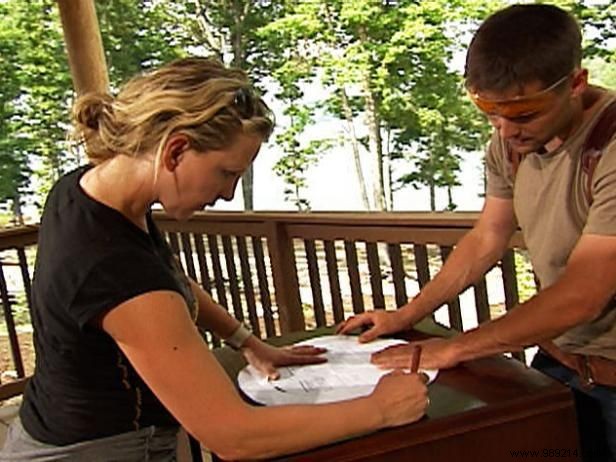
When you order a sink like the one we made, the manufacturer will usually send a template along with it. If not, make your own so you can cut a precise hole to drop the sink into.
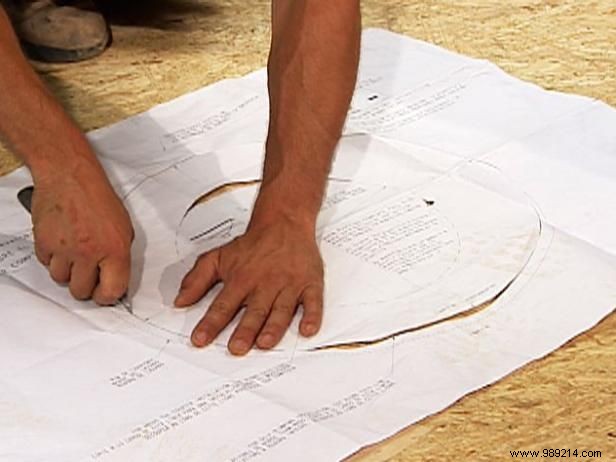
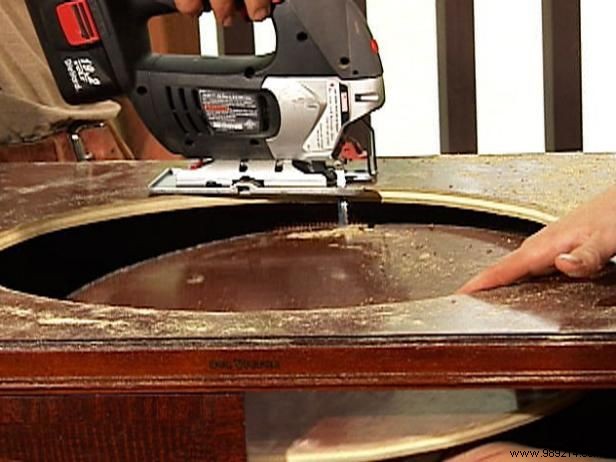
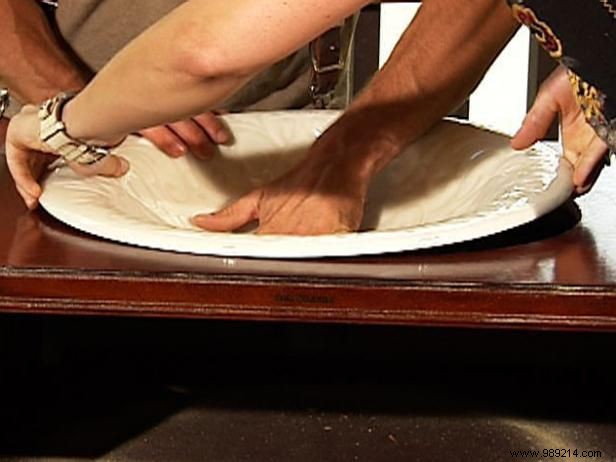
Trace a hole for the sink in the vanity (Image 1). By doing this first, you will be able to plan the best place for the faucet and handles. Cut the sink hole with an orbital saw (Image 2). Once the hole is cut to size, snap the sink into place (Image 3). With the sink, you can determine where the faucet and handles will look best.
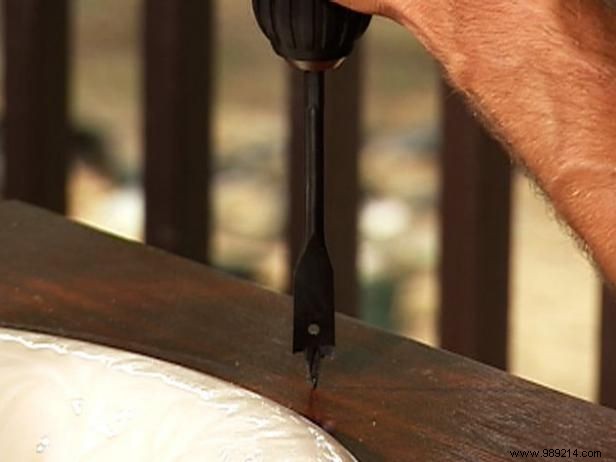
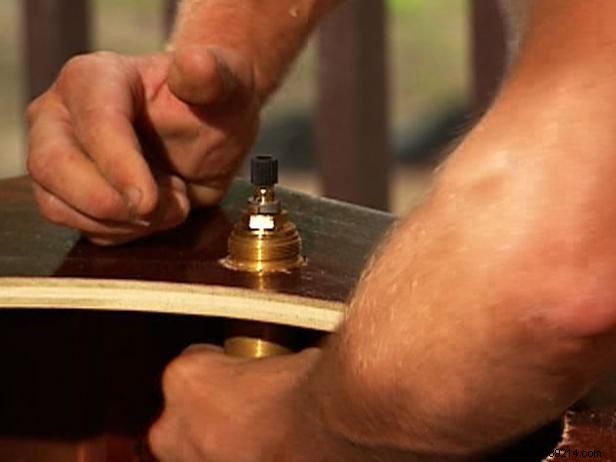
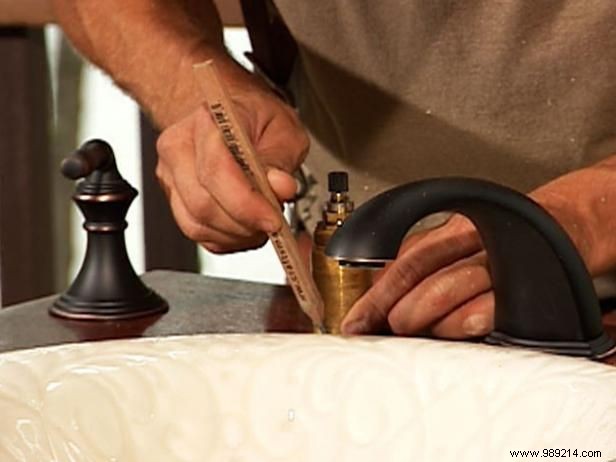
Once you have an idea of where you want the faucet and handles to be, trace the cartridges to get precisely sized holes to drill (Image 1). Cut holes, using the appropriate drill bit, for the faucet and handles for the hot and cold water supply. We use 1-inch drill bits for our handles (Image 2). Push the cartridges up through the vanity and attach the handles (Image 3).
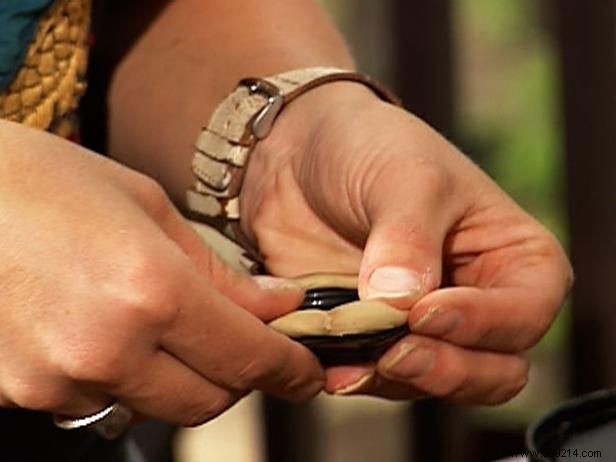
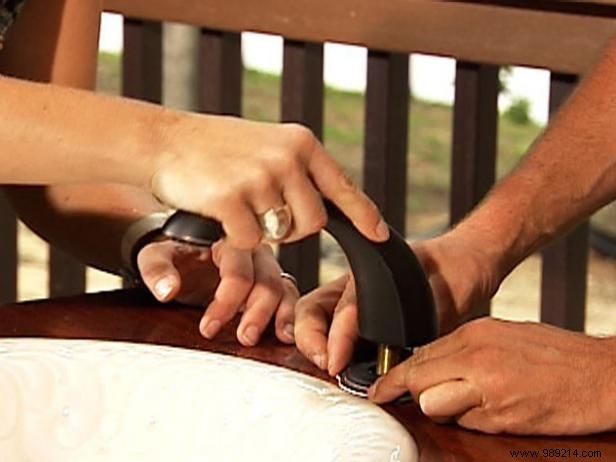

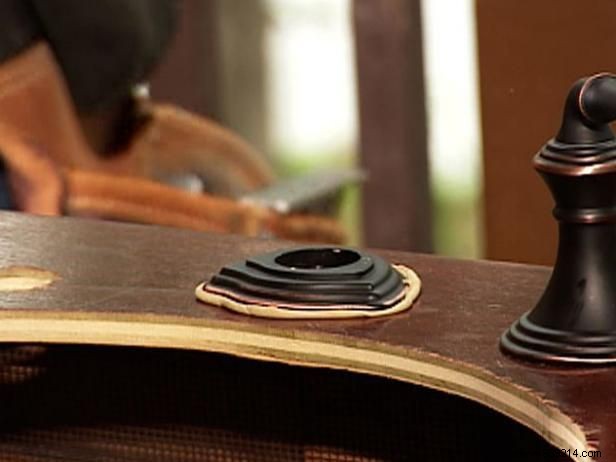
Before attaching the faucet, create a waterproof seal using putty around the base of the faucet that rests on the vanity (Images 1 and 2). Press the base hard against the vanity and drop the faucet (Picture 3).
Make cutouts in the back for the wall pipe. Move the sink flush against the wall to get an idea of where the pipes should go. Drill a reasonable sized hole – enough room to access the plumbing comfortably in the future. In our modernized vanity, we had to remove one of the existing shelves inside the cabinet to make room for the plumbing underneath.
Once you've made all the cuts for all the pipes, slide the vanity into place. The p-trap is now ready to be installed. Screw the trap into the sink drain from below. You should be able to screw this on using just your hand, but you might want to use a wrench to make sure there are no leaks. Once the faucet and p-trap are securely fastened, you will need to connect the water supply line which will ultimately connect to the shut-off valve on the main water supply pipes. Take care when securing water supply lines – they are usually made of brass or plastic and can be easily removed. To avoid stripping lines, try to hand-tighten fittings only.